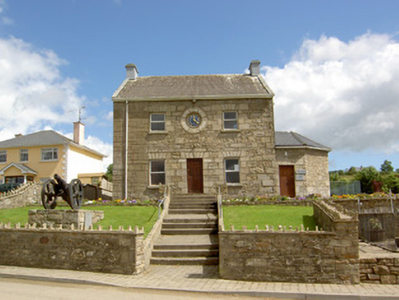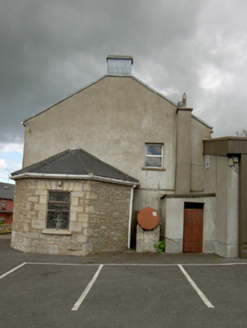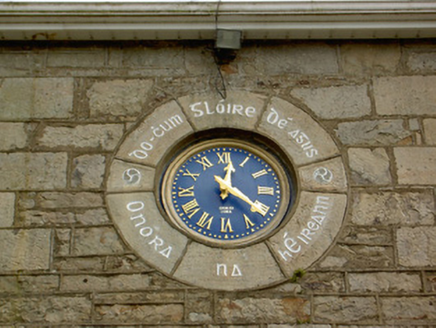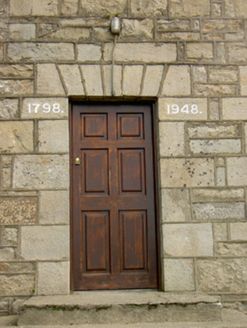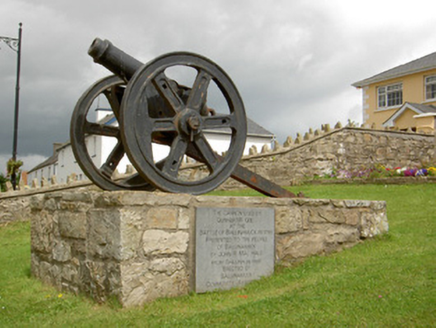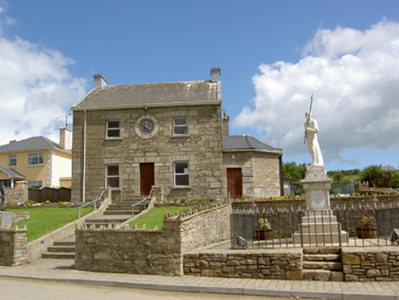Survey Data
Reg No
13301002
Rating
Regional
Categories of Special Interest
Architectural, Historical, Social
Previous Name
Ballinamuck Constabulary Barrack
Original Use
RIC barracks
In Use As
Museum/gallery
Date
1820 - 1840
Coordinates
218679, 290688
Date Recorded
03/08/2005
Date Updated
--/--/--
Description
Detached three-bay two-storey former Royal Irish Constabulary barracks, built c. 1830, with single-storey extension to the south and large recent extension to rear (east). Now in use as visitors centre/museum. Pitched corrugated-cement/asbestos roof with rendered chimneystacks and raised verges to either end (north and south). Snecked sandstone walls. Square-headed window openings with replacement windows having flush cut sandstone surrounds and limestone sills. Clock with round face to central bay at first floor level (above entrance) with cut sandstone block-and-start surround with Gaelic inscription. Central square-headed door opening with flush cut sandstone block-and-start surround to timber panelled door, flanked by date stones. Set back from road, on slightly elevated location, adjacent to a road junction to the south end of the village of Ballinamuck. Sandstone boundary wall to road frontage (west) and south. Cannon from Battle of Ballinamuck (1798), mounted on rubble sandstone plinth, and memorial monument to battle (13301002) located to the west and southwest respectively.
Appraisal
This well-proportioned building is of historical significance as a former Royal Irish Constabulary barracks. Although modernised and extended, the building still retains its early form and character. It is well-built using good quality sandstone. The round opening, now containing a clockface, previously had a Star of David window, an unusual feature for a barrack building. This hints that it may have been a Masonic lodge at some stage. Reputedly built by the King-Harman family of Newcastle House (13402709), near Ballymahon, this building now functions as a visitor’s centre and museum to the Battle of Ballinamuck in 1798. According to local sources, this structure originally had two attached towers/turrets, now removed. A number of barracks were constructed during the first half of the nineteenth century in north County Longford, an area that suffered a high level of agrarian tension throughout the nineteenth century and into the twentieth century. The barracks was attacked by General Sean McEoin during the War of Independence. The cannon to the front is an interesting historical artefact associated with the Battle of Ballinamuck in 1798. Located in the centre of the village, it forms an integral part of the historic fabric of Ballinamuck and is an important element of the built heritage of north County Longford.

